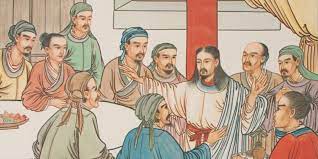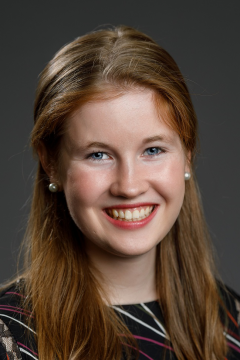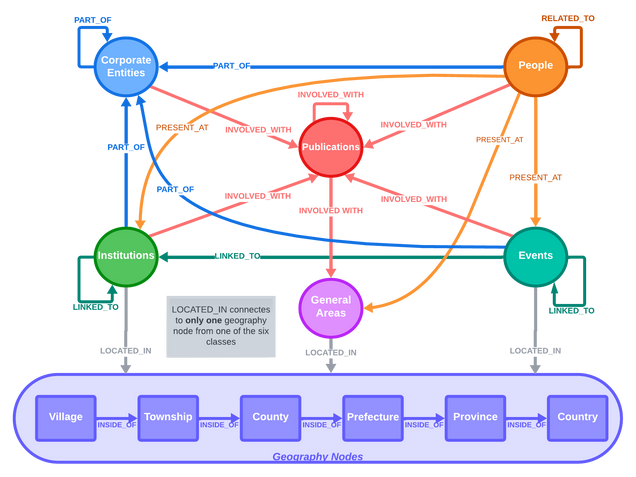How has Christianity Shaped China Over the Last 400 Years?

Graduate Student Spotlight: Greta Rauch
By Alex Grzybowski, Hariri Institute for Computing

How can we use the technology of the future to understand the interconnectivity of the past? Humans have interacted with each other since the beginning of civilization, and subsequent upgrades in technology have allowed increased connection between many different groups of people. While the ability to connect around the globe has only gotten easier across time due to the internet, the overwhelming amount of information online makes it difficult to track down specific people or events and their broader impact on the world.
Along with team collaborators, including Hariri Institute Faculty Affiliates Dr. Daryl Ireland and Dr. Eugenio Menegon, Graduate Student Fellow Margaret (Greta) Rauch looks to tackle this problem as project manager for the Chinese Historical Christian Database (CHCD), a digital tool initiated by a Hariri Institute Incubation Award that quantifies and visualizes the place of Christianity in modern China (1550-1950).
“CHCD has been such an exciting project,” says Rauch, who is studying Chinese literary and intellectual history and is advised by Dr. Menegon, an associate professor of Chinese History at BU. “It’s an innovative way for anyone, from a high school student to an academic researcher, to visually discover Western influence in China during this period, and conversely, Chinese influences on the West through visual and quantitative tools.”

The CHCD digital tool provides roughly four million data points, including names, occupations, locations, dates, and more. A key differentiator of CHCD is its focus on the big picture. Whereas most historical research databases focus on the micro scale by zooming into one specific person or event, this database does the opposite. Taking a macro scale approach, CHCD allows a user to zoom out from a specific person at a specific time period, and discover how that information correlates with major events in China at that time.
“By using the nodes of a single person or event and connecting it to other nodes, CHCD creates an overarching theme of how Christianity affected Chinese society and culture from 1550-1950,” says Rauch.
Another distinguishing factor of CHCD is its incorporation of a multitude of varied resources from which it pulls insights. “Unlike most other research on the topic, CHCD analyzes Catholic, Orthodox, and Protestant sources, and focuses on gaining insight from both local Chinese pastors and from Western missionaries,” explains Rauch. “This allows the database to remain unbiased and gain credibility, as the goal is to analyze and quantify the sources, not support a certain belief over another.”
As project manager, Rauch gets to work on a little bit of everything. “My primary responsibility is to keep our project moving forward,” says Rauch. “I wear lots of hats – debugging and refining our frontend code, automating our data cleaning, managing undergraduate student researchers who are collecting and cleaning data, fielding questions from scholars interested in the CHCD, and meeting with our partners to continue discussions about the CHCD and the project’s future.”
This experience has also taught Rauch a lot about the importance of building community among the undergraduate researchers, and how to refine her leadership and management skills. “I’ve learned about the complications and challenges of data cleaning, especially what tasks can be automated and what tasks can’t,” Rauch explains. “I’ve also honed my technical skills, especially in web development, which I previously had little experience in, and I’ve been learning how to present a technical project to a non-technical audience, making our work more accessible.” Delving into this project has also opened many avenues for further research on the subject. “In cleaning data for our new release, I learned about many different publications created by Chinese Christians and missionaries that I hadn’t previously known existed.” Rauch adds that “this has been helpful in giving me ideas for my own dissertation research.”
Recently, the project team launched CHCD Version 2.0 of the project. Rauch describes the late nights required to get everything ready for the live launch of Version 2.0. “There were lots of last minute zoom calls as we worked to debug our site and make sure all the data was properly cleaned,” says Rauch. “I certainly had my fair share of late nights fueled by way too much caffeine and ice cream.” While stressful, Rauch is proud to say the live launch was extremely successful and rewarding. “We demoed the website live to a group of scholars from all over the world and fielded questions from them,” Rauch explains. “It was incredible to see everyone’s excitement about the CHCD. I am so grateful to work with such a dedicated team and am proud of us for launching V2.”
Before coming to Boston University, Rauch studied at the University of Notre Dame where she received a B.S. in computer science with a supplementary major in Chinese. She has likened her time at BU to “humanities boot camp” where she had to relearn how to deeply analyze primary sources and rewire her brain to think in terms of humanities as opposed to computer science, which she says has been very rewarding.
“Looking at problems from a different vantage was challenging at first, but it’s been very rewarding,” says Rauch. “The CHCD project has been an exciting project. I’ve loved working on the CHCD project and I’ve been inspired by the dedication of so many undergraduates, scholars, and independent researchers who have made the project possible.”